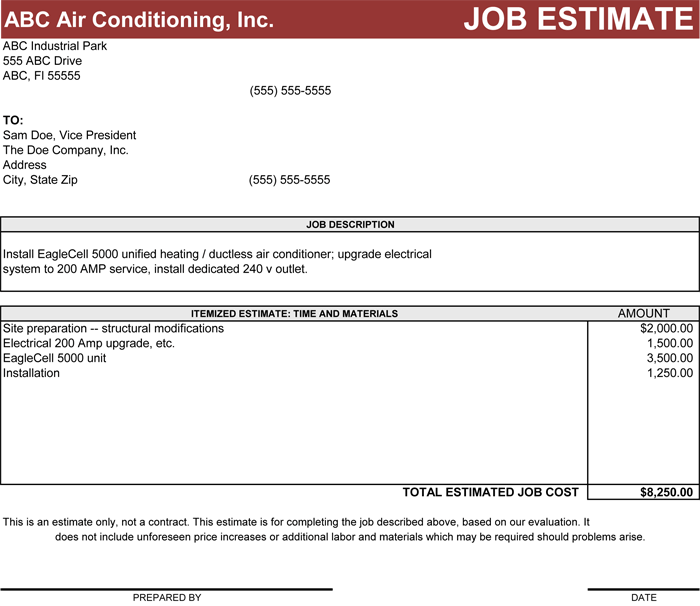Many businesses would have a fixed price list for specific products and services. Plus, there may be some unique pricing based on the exclusivity of the product or service. Therefore, with all these specifications, businesses use estimates to properly showcase their standardized and exclusive prices for their products and services to avoid any form of ambiguity.
Other businesses, such as hairdressers, have a standard price list for all their customers. Decorators and event planners will have a price list for specific services that customers want. However, projects that are a lot larger in scope will require the customer to draw up a tender document to discuss the price.
Hence, this article will examine the estimate template, how it works, the differences between the estimate and other related terms, and other intricacies you should use if you want to get an estimation right. But before then, why is it important for a business?
Estimation Templates
Now that we have seen several intricacies in preparing well-detailed costs, it is important to see a template that incorporates all the ideas we have discussed. As much as it is crucial to know these things, a typical representation detailing all the discussions will guide you in preparing yours. Following are some professionally crafted templates for estimates.
Therefore, you can download a detailed template here:
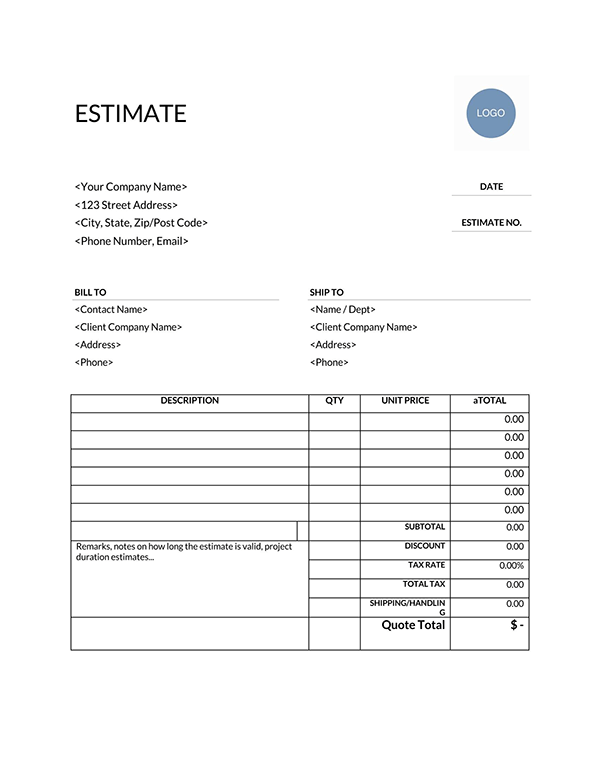



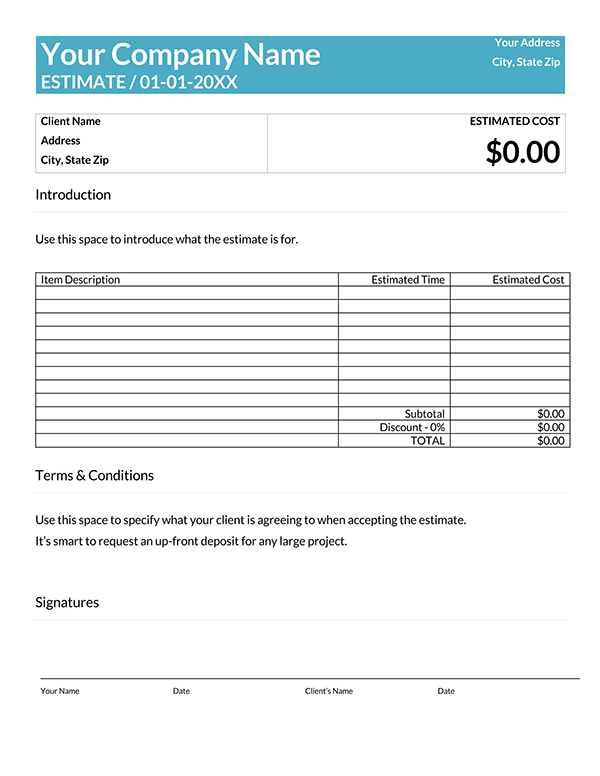


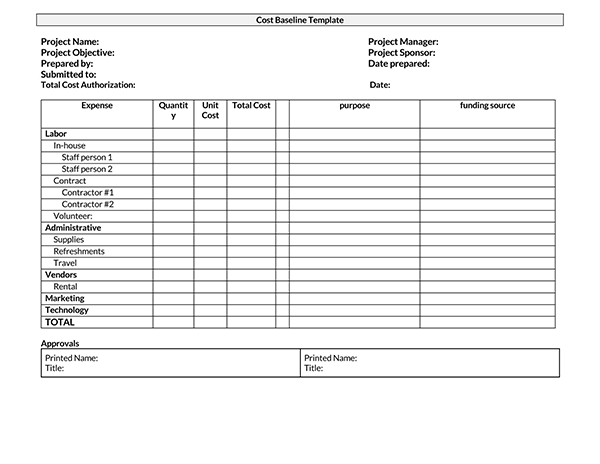
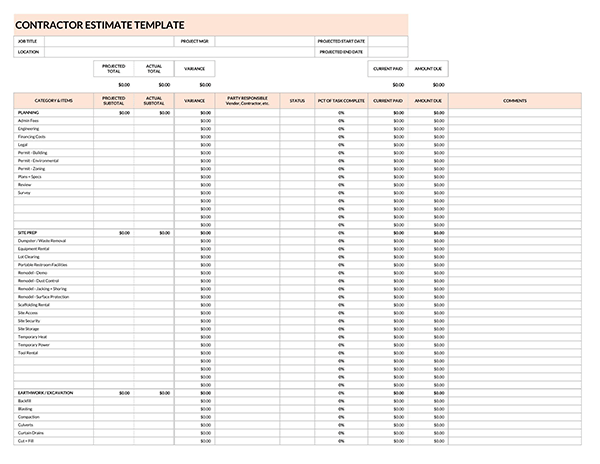
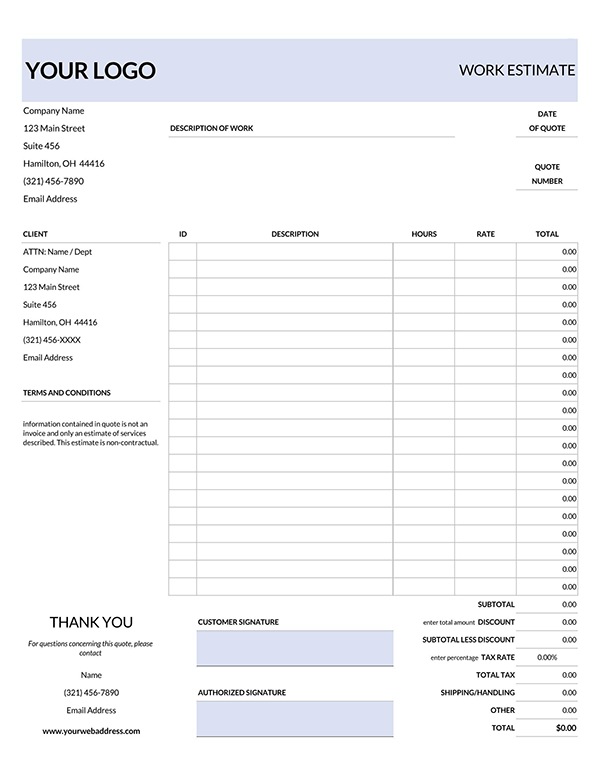

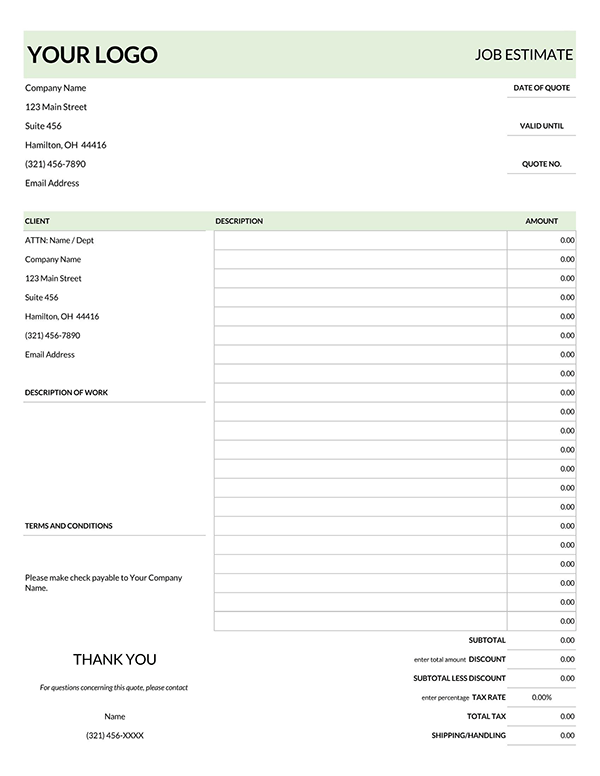
Why is Estimation Required?
An estimation of cost is essential for the growth of any business and the successful completion of any project. Moreover, it will help business owners project the future and see how well their plans will be implemented with their available funds. Furthermore, it will also provide an action plan to reduce expenditure during work.
Additionally, an estimation is vital in opening contract negotiations with other business owners and customers. Finally, in retrospect, an estimate will give you feasibility to help you gauge the proposed plan, time of completion of the work, funds available, and other intricacies that we will look into in this article.
Estimation vs. Invoice
Many times, people have mistaken estimations for invoices and vice versa. This is because only a thin line exists to understand the disparity. However, there is a significant difference that needs to be noted.
Estimates are the rough costs of a proposed project; they may be definite or accurate numbers, but they serve as a plan for business owners to have an idea of what the project would look like.
On the other hand, an invoice is a written agreement that details the obligation on the part of the buyer to pay for a product or service. It also details the transaction between the buyer and seller.
Furthermore, an invoice carries the actual cost of a project, product, or service. Although an estimation is not the actual price, it should be speculation based on research on that specific product or service. Plus, it is mandated by law for you to stick to the prices when you get the contract or the job. However, the final invoice should not stray too far from the estimate. If the figures in it and the invoice differ significantly, it might spell a turn-off for the customer.
Estimation vs. Quote
The world we live in today has provided different kinds of professions for many people. There are now remote jobs that have revolutionized the corporate world today. With that being said, each profession has different skills, times of completion, and materials needed for the project. Therefore, these factors are considered when looking at the price list. It is essential to leave this foundation to understand the difference between an estimate and a quotation.
A quote is a fixed cost for a particular project, so most business owners would have added the necessary factors for the completion of the project. So even if you do more than expected, you will still give your customer the exact quotation and be paid the stipulated amount.
The difference between both documents is that an estimate is a calculated guess based on some research in the industry. On the other hand, a quotation is the fixed cost price after several factors have been considered to complete a project. It is important to add an expiration date, which means that the quote will not be used after that time. To properly look at the difference, a freelance writer who helps to write copies for businesses can have a quote based on the number of words and the kind of project, while a manufacturing company gives out estimates.
How Does it Work?
From the above information, it is clear that cost calculation is an intricate part of any business project.
Therefore, there are essential steps to follow to understand what to expect from a project:
Agree on an estimating basis
Firstly, you will need to agree on how the cost estimation will go with the other party. In agreeing on the way it should be set up, emphasis has to be laid on the following:
- Allowances
- Labor rates
- Prices of materials
- Productivity of labor
- Indirect costs
- Scope allocation
- Engineering
- Methodology
- The cost-estimating software
Both parties must agree on these factors before the commencement of the project.
Collect scope documentation
Secondly, you will need to collect the scope documentation that details all the features and requirements expected from the project. It is more or less like a plan that outlines everything the project is set to achieve and the elements embedded to attain the goals.
Estimate direct cost
Thirdly, you will need to estimate the direct cost based on the scope documentation. Again, this will help give an educated guess that will put the project requirements into perspective. However, it all depends on the size of the project, the current state of the project, tools, and other techniques.
Estimate other costs and factors
After adding the direct cost, you will need to add other categories, such as allowances, indirect costs, materials, and other factors that can increase the price. It is necessary to add these factors so that you do not misjudge the things you need for the success of a project. The information obtained from risk management and finance is used to make informed decisions concerning the funds that should be added.
Peer review
Next, you need to have a peer review of the costs that you have prepared. This will help spot issues with the quantities and costs needed for the project. Plus, you can see where you need to increase the prices. You don’t want to miss out on the things you need for your project.
Finalize and send an estimate for approval
Finally, estimation is a never-ending process, and information is updated regularly. Therefore, you will need to show the historical project data for alignment with the client and reduce any issue of missing information.
What to Include?
We now know how the cost estimation for a successful project works and the importance of taking the necessary steps that have been highlighted above. Now, we will look at what to include when preparing an estimation cost for a project
Standard information
The standard information includes your complete company information, contact information, and date, and it would be great if you had letterhead to carry all this information.
Line items
This part usually takes up the most space. However, by lining the items, you properly segment each area for easy readability and understanding. Therefore, you should include the number of hours the project will take, the licenses and fees required, and the materials needed.
Overall price
It is necessary to include the overall cost for every indirect or direct cost and factor in all the other elements like location, time, skills, and materials.
Breakdown, listing the components of the price
In certain situations, the prices can change depending on different factors. Therefore, breaking down the price is vital, showing that it is subject to change. Furthermore, you need to state the factors that led to the price and the subsequent price change, so it is advisable to send different estimations based on different instances.
Schedule, detailing when work will be done, or products delivered
You need to include the time when the project and all the work in the estimation will be delivered. Both you and the other party need to be clear on the schedule of how the work will go and how it will be done.
Terms and conditions
Like any contract, you need to include the terms and conditions that guide the agreement. The same applies to costs. Therefore, adding the terms and conditions that can influence the estimation.
Estimate’s validity
You need to invoice an expiration date because the price and value of materials, laborers, and other factors can change as time progresses. Therefore, state how the estimation is going to be valid.
Project timeline
If a project takes up more than a day, it is only normal for the customer to ask for a way. Therefore, you will need to specify how long a particular project will take to be completed for clarity.
Deposit and payment requirements
Most large projects require them. Therefore, you might need to include how much you want clients to pay. You could make a plan for incremental payments and provide options for clients to choose from based on their abilities.
Method of Estimating
It would be best to teach certain operations to estimate the right way. First, we have looked at the things to include, how estimation costs work, and their essence. Now, we will look at the methods through which you make a proper one for a project.
Prepare a detailed estimate
In preparing a detailed template, you need to follow the steps outlined in what to include and how an estimate works. A well-detailed one should comprise the entire company or business information and every intricate project element, including the project timeline, licenses, fees, and other things.
Calculate the rate of each unit of work
With each unit devoted to ensuring the successful completion of the work, to correctly estimate it, you need to calculate the amount of work each unit will do. Therefore, consider the location, skills, human resources, and other factors when calculating the rate of each unit.
Prepare abstract
An abstract is a general overview of what is contained in the estimate. It is more or less the summary of everything.
Data required
There is some specific information that is needed when thinking about the estimation method. This information includes the following:
- Drawings: Are there any plans or evaluations supposed to be seen? If there are, they should be shared to estimate the project correctly.
- Specifications: Are there any specific guidelines necessary for the completion of the project? There are general specifications that relate to materials and detail the work schedule for the project. On the other hand, the detailed specification relates to the exact proportions of each aspect of the work.
- Rates: Have you determined the rates for each unit of work supposed to be completed? You will need to consider the location, transportation of materials, cost of these materials, and the wages of the laborers hired.
Lumpsum
This relates to the cost of petty items that will also be used to complete the project.
EXAMPLE
Electrical installations, architectural items, and other items are part of the lump sum, which needs to be considered when preparing an estimated cost.
Work charged
The people employed to help with the construction, the supervisors, and other personnel who are employed temporarily for the project’s success These people’s salaries need to be established appropriately based on the lump sum amount allocated for the work.
Frequently Asked Questions
A template should include the complete business information, the client’s name and details, and the number. Furthermore, for clarity, you will also need to include the breakdown of the work you will do on the project, the project timeline, and the materials, personnel, and other things you will need. Finally, the validity, license and fees, and the client’s signature space have to be included.
We would advise that you use the free template that we have provided, as this will only take a few minutes to do. However, if you want to use a pen and paper, it might take longer to finish up the whole estimation.
As we have said in the article, each profession has different services and products with specific requirements to ascertain prices. Therefore, it is best to decide what services you are willing to offer, create a list of line items, and attach prices for each service. But all in all, it is best to conduct proper research, as an estimation is an educated guess. Of course, it would help if you were well-informed.



